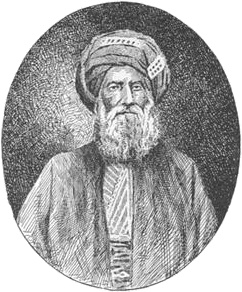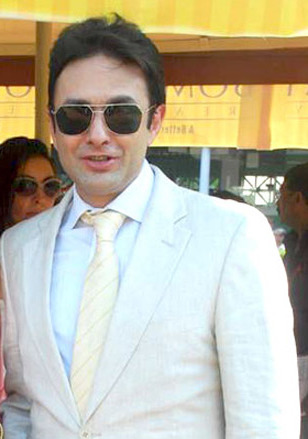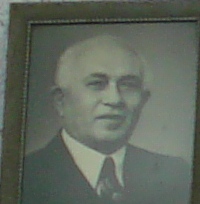
Kurla is a suburb of East Mumbai, India. It is the headquarters of the Kurla taluka of Mumbai Suburban district. The neighbourhood is named after the eponymous East Indian village that it grew out of. It falls under Zone 5, Ward 'L' of the Bombay Municipal Corporation. Its railway station, spelt as Coorla until 1890, is one of the busiest on the Mumbai suburban railway on the central and harbour railway lines of Mumbai as is the Lokmanya Tilak Terminus (LTT) for out-station passenger/express trains.

Parel is a neighbourhood of Mumbai. Parel used to have a number of textile mills, but these have been replaced by commercial office space development.

Dharavi is a residential area in Mumbai, Maharashtra, India. It has often been considered to be one of the world's largest slums. Dharavi has an area of just over 2.39 square kilometres and a population of about 1,000,000. With a population density of over 277,136/km2 (717,780/sq mi), Dharavi is one of the most densely populated areas in the world.

Around 500 BC, the Mahajanapadas minted punch-marked silver coins. The period was marked by intensive trade activity and urban development. By 300 BC, the Maurya Empire had united most of the Indian subcontinent except Tamilakam, which was ruled by the Three Crowned Kings.The resulting political unity and military security allowed for a common economic system and enhanced trade and commerce, with increased agricultural productivity.

Khadi, derived from khaddar, is a hand-spun and woven natural fibre cloth promoted by Mahatma Gandhi as swadeshi (self-sufficiency) for the freedom struggle of the Indian subcontinent, and the term is used throughout India, Pakistan and Bangladesh. The first piece of the hand-woven cloth was manufactured in the Sabarmati Ashram during 1917–18. The coarseness of the cloth led Gandhi to call it khadi. The cloth is made from cotton, but it may also include silk or wool, which are all spun into yarn on a charkha. It is a versatile fabric that remains cool in summer and warm in winter. To improve its appearance, khadi is sometimes starched to give it a stiffer feel. It is widely accepted in various fashion circles.

David Sassoon was the treasurer of Baghdad between 1817 and 1829. He became the leader of the Jewish community in Mumbai after Baghdadi Jews emigrated there.

Andrew Geddis was a leading businessman and sports enthusiast in Bombay in the decades leading up to independence.

The economy of the state of Maharashtra is the largest in India. Maharashtra is India's second most industrialised state contributing 20% of national industrial output. Almost 46% of the GSDP is contributed by industry. Maharashtra has software parks in many cities around the state, and is the second largest exporter of software with annual exports over ₹ 80,000 crores.
Indigenous tribals have inhabited Mumbai (Bombay) since the Stone Age. The Kolis and Aagri were the earliest known settlers of the islands. Between the 2nd century BCE and 10th century CE, the islands came under the control of successive indigenous dynasties: the Satavahanas, Abhiras, Vakatakas, Kalachuris, Konkan Mauryas, Chalukyas, Rashtrakutas, Silharas & Cholas.

The Great Depression in India was a period of economic depression in the Indian subcontinent, then under British colonial rule. Beginning in 1929 in the United States, the Great Depression soon began to spread to countries around the globe. A global financial crisis, combined with protectionist policies adopted by the colonial government resulted in a rapid increase in the price of commodities in British India. During the period 1929–1937, exports and imports in India fell drastically, crippling seaborne international trade in the region; the Indian railway and agricultural sectors were the most affected by the depression. Discontent from farmers resulted in riots and rebellions against colonial rule, while increasing Indian nationalism led to the Salt Satyagraha of 1930, in which Mahatma Gandhi undertook marches to the sea in order to protest against the British salt tax.

Girangaon was a name of an area now part of central Mumbai, India, which at one time had almost 130 textile mills, with the majority being cotton mills. The mills of Girangaon contributed significantly to the prosperity and growth of Mumbai during the later nineteenth century and for the transformation of Mumbai into a major industrial metropolis. Girangaon covered an area of 600 acres (2.4 km2), not including the workers' housing. The mill workers lived in a community, and they fostered a unique culture which shaped Mumbai at the turn of the twentieth century. This textile industry flourished until the early 2000s after which most of the mills were shut down, as the owners deemed them unprofitable and declared they were incapable of paying their workers' wages.

Ness Nusli Wadia is an Indian businessman. Wadia is the managing director of Bombay Burmah Trading Corporation, a company which has holdings in most of the Wadia Group subsidiaries, including an indirect majority stake in Britannia Industries. He was the Joint Managing Director of Bombay Dyeing, the flagship company of the Wadia Group, till March 2011 when he stepped down from the post. Wadia is a co-owner of the Indian Premier League cricket team Punjab Kings.

Century Textile and Industries is an Indian textile and paper manufacturing and export company based in Mumbai. The main business activity involves manufacture of cotton textiles, yarn, denim, viscose filament rayon yarn, tire-cords, caustic soda, sulfuric acid, salt, pulp, and paper. The company also has a presence in the international textile markets and exports its products to more than 45 countries.
The textile industry in India, traditionally after agriculture, is the only industry in the country that has generated large-scale employment for both skilled and unskilled labour. The textile industry continues to be the second-largest employment generating sector in India. It offers direct employment to over 35 million people in the country. India is the world's second largest exporter of textiles and clothing, and in the fiscal year 2022, the exports stood at US$44.4 billion. According to the Ministry of Textiles, the share of textiles in total exports during April–July 2010 was 11.04%. During 2009–2010, the Indian textile industry was pegged at US$55 billion, 64% of which services domestic demand. In 2010, there were 2,500 textile weaving factories and 4,135 textile finishing factories in all of India. According to AT Kearney’s ‘Retail Apparel Index’, India was ranked as the fourth most promising market for apparel retailers in 2009.

High Street Phoenix, formerly known as Phoenix Mall, is one of the largest shopping malls in India, situated in Lower Parel, Mumbai. Its gross floor area is 3,300,000 square feet (310,000 m2). In addition to the mall, the compound hosts a five-star hotel, a multiplex, commercial space and a residential tower.

Jamshedji Nusserwanji Tata was an Indian industrialist and philanthropist who founded the Tata Group, India's biggest conglomerate company. He established the city of Jamshedpur.
The textile industry is Pakistan's largest manufacturing sector, employing nearly 25 million people. As the eighth largest exporter of textile commodities in Asia, the industry contributes 8.5% to the country's Gross domestic product.

Sir Homi Maneck Mehta KCIE KBE JP was an Indian industrialist.
Tata Textile Mills was a textile mills business of Tata Group, with its head office in Bombay. It consisted of four textile mills; namely, Central India Mills also popularly known as Empress Mills in Nagpur, the Svadeshi Mills in Bombay, the Tata Mills in Bombay, and the Advance Mills in Ahmedabad. For several decades the four mills produced and sold fabrics under the much-reputed brand name of Tata Textiles.
The Mughal Empire's economic prowess and sophisticated infrastructure played a pivotal role in shaping the Indian subcontinent's history. While Mughal Empire is conventionally said to have been founded in 1526 by Babur, the Mughal imperial structure, however, is sometimes dated to 1600, to the rule of Babur's grandson, Akbar. The economy in South Asia during the Mughal era increased in productivity compared to medieval times. Mughal India's economy has been described as a form of proto-industrialization, an inspiration for 18th-century putting-out system of Western Europe prior to the Industrial Revolution. It was described as large and prosperous. India producing about 28% of the world's industrial output up until the 18th century with significant exports in textiles, shipbuilding, and steel, driving a strong export-driven economy. While at the start of 17th century, the economic expansion within Mughal territories become the largest and surpassed Qing dynasty and Europe. The share of world's economy grew from 22.7% in 1600, which at the end of 16th century, has surpassed China to become the world's largest GDP. Bengal Subah, the empire's wealthiest province alone, the province statistically has contributed to 12% of Gross domestic product and a major hub for industries, contributing significantly to global trade and European imports, particularly in textiles and shipbuilding.
















